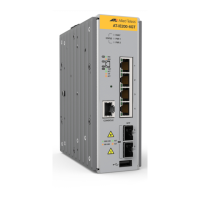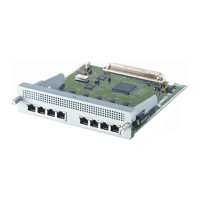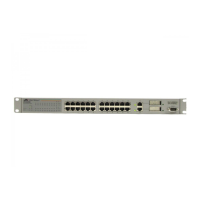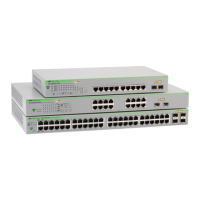C613-50631-01 Rev A Command Reference for IE340 Series 2875
AlliedWare Plus™ Operating System - Version 5.5.3-0.x
AMF AND AMF PLUS COMMANDS
ATMF
VIRTUAL-LINK
Mode Global Configuration
Usage notes The Layer 2 tunnel that this command creates enables a local AMF session to
appear to pass transparently across a Wide Area Network (WAN) such as the
Internet. The addresses configured as the local and remote tunnel IP addresses
must have IP connectivity to each other. If the tunnel is configured to connect a
head office and branch office over the Internet, typically this would involve using
some type of managed WAN service such as a site-to-site VPN. Tunnels are only
supported using IPv4.
Configuration involves creating a local tunnel ID, a local IP address, a remote
tunnel ID and a remote IP address or domain name. A reciprocal configuration is
also required on the corresponding remote device. The local tunnel ID must be
unique to the device on which it is configured.
If an interface acquires its IP address dynamically then the local side of the tunnel
can be specified by using the interface’s name instead of using its IP address. When
using a dynamic local address the remote address of the other side of the
virtual-link must be configured with either:
• the IP address of the NAT device the dynamically configured interface is
behind, or
• 0.0.0.0, if the virtual-link is configured as a secure virtual-link.
For instructions on how to configure dynamic IP addresses on virtual-links, see the
AMF Feature Overview and Configuration Guide.
The tunneled link may operate via external (non AlliedWare Plus) routers in order
to provide wide area network connectivity. However in this configuration, the
routers perform a conventional router to router connection. The protocol
tunneling function is accomplished by the AMF nodes.
NOTE: AMF cannot achieve zero touch replacement of the remote device that
terminates the tunnel connection, because you must pre-configure the local IP address
and tunnel ID on that remote device.
Example 1 Use the following commands to create the tunnel shown in the figure below.

